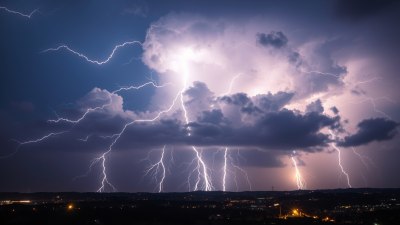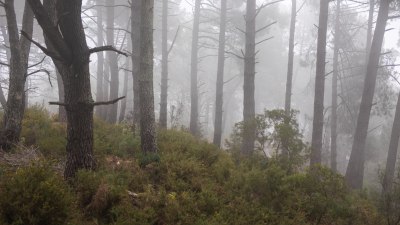What Makes the Wind Go 'Nope' When You Want a Calm Day
Explore the fascinating factors that lead to unexpected windy days when calmness is desired.

This image was created with the assistance of Freepik
Wind is an invisible force that can dramatically influence our daily experiences, especially on days we've planned for relaxation or outdoor activities. Have you ever glanced at the weather forecast only to find your calm day disrupted by unexpected gusts? This article will delve into the science behind the wind, what causes it to manifest unexpectedly, and how various factors, including local geography and atmospheric pressure, contribute to those days when the wind simply goes 'nope.'
The Nature of Wind
To understand why the wind may turn against your plans, we need to begin with what wind is. Wind is the movement of air from areas of high pressure to areas of low pressure. These pressure differences are driven by solar heating of the Earth's surface. When the sun heats the ground, warmer air rises and cooler air rushes in to fill the gap, creating wind.
How Air Pressure Affects Wind
As mentioned, air pressure is a primary factor in wind formation. When a high-pressure system (often associated with clear skies) moves into an area, calm weather can prevail. However, the transition from high to low pressure can trigger significant wind events. During these transitions, the force exerted by the difference in pressure can become quite pronounced. If a low-pressure system approaches your location, even the forecasted calmness may yield to unexpected gusts.
Local Topography's Role
Your location's geography can heavily influence local wind patterns. Mountain ranges can funnel wind, causing it to speed up as it flows through passes and valleys. Conversely, valleys may experience calmer conditions when air is trapped. If you're in an area with varied terrain, expect that geography can dictate local wind behaviors, especially when weather systems shift.
Seasonal Changes
The time of year plays a significant role in weather patterns, including wind. In spring and fall, for instance, the temperature differences between warm and cool air masses are more pronounced, often leading to more turbulent weather and increased wind. Summer generally brings calmer conditions, but certain weather fronts can disrupt this pattern at any time of year, providing those windy surprises when you least expect them.
The Influence of Weather Fronts
Weather fronts are also critical in understanding wind dynamics. A cold front, for example, moves faster than a warm front, and the confrontation between these two air masses can result in sudden changes in wind speed and direction. If you're planning a calm day and a front unexpectedly arrives, winds can pick up, disrupting your idyllic plans.
Understanding Wind Turbulence
Not all winds are sustained; turbulence can lead to sudden gusts in areas that were previously calm. Wind can change direction based on temperature gradients, atmospheric disturbances, and even human-made structures, which can create turbulent flow patterns. On days you wish for calm, consider that the natural environment may harbor these hidden complexities that lead to a shift from tranquility to blustery unpredictability.
Microclimates
Microclimates are small-scale weather variations caused by local geographic features such as lakes, urban areas, and forests. They can create unique wind patterns that may differ from the general weather forecast. Being mindful of microclimates can help you anticipate when wind may arise unexpectedly. For example, a wooded area might block wind, creating calmness, while an open field nearby might experience gusts.
The Role of Urban Areas
Urban environments introduce unique factors that can affect wind patterns. Tall buildings can create wind tunnels, where air is channeled between structures, resulting in intensified gusts that may not appear on standard weather forecasts. If you’re in a city, be prepared for moments where the calm you’re seeking might be disrupted by these urban wind patterns.
Weather Forecasting Challenges
Forecasts provide valuable insights, but they are inherently challenging due to the complexities of weather systems and their interactions. Small-scale atmospheric phenomena may not always be captured in regional forecasts, leading to those days where you expect calm yet encounter blustery winds. It's wise to check multiple sources and understand that occasional discrepancies can occur.
Dealing with Unexpected Windy Days
When confronted with unexpected winds, consider reconsidering your plans or finding ways to adapt. Wind can create excitement, transforming a mundane outing into a thrilling adventure. For instance, instead of a peaceful park picnic, perhaps kite flying or windsurfing could become an option. Embrace the natural elements, and allow them to shape your day's experience.
The Positive Side of Wind
Windy days can often seem like a nuisance, but they also bring numerous benefits. Winds play a crucial role in pollination, seed dispersal, and even the distribution of temperature, making them an essential component of Earth's ecosystems. Additionally, for enthusiasts of outdoor sports, a windy day can offer the perfect conditions for activities like sailing and paragliding, transforming a potential disappointment into an opportunity for adventure.
Understanding the forces that shape our weather, including wind, can deepen our appreciation for nature's unpredictability. While it's frustrating when the wind disrupts our calm plans, recognizing the multitude of factors involved can help mitigate disappointment. Embrace these spontaneous gusts of wind; rather than viewing them as adversaries, they can be allies in crafting unique experiences and adventures. Next time the wind goes 'nope,' perhaps allow it to lead you somewhere unexpected.











